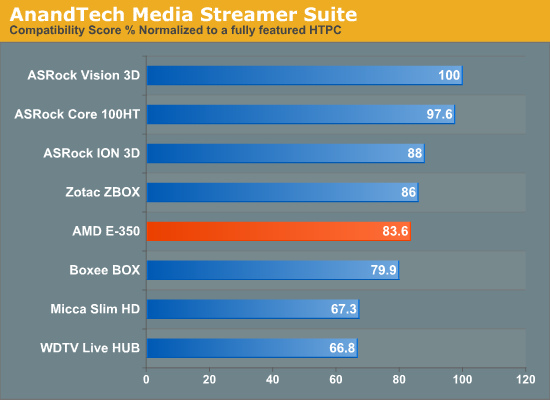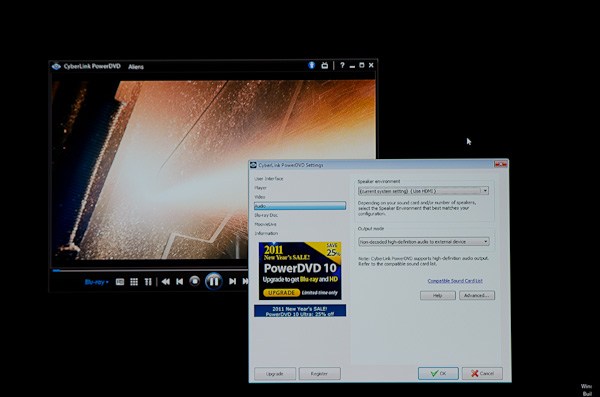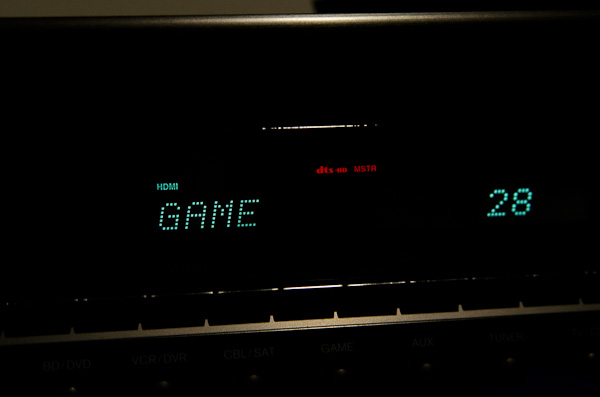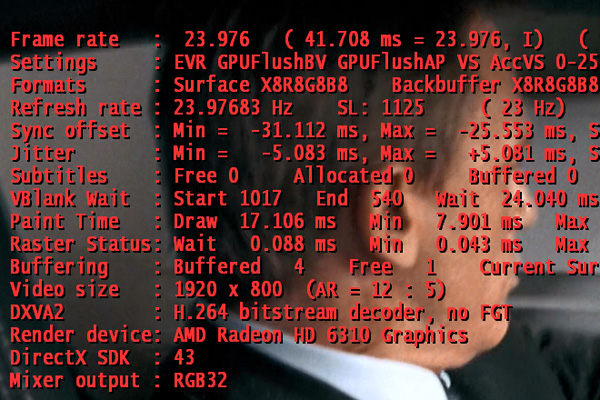The Brazos Review: AMD's E-350 Supplants ION for mini-ITX
by Anand Lal Shimpi on January 27, 2011 6:08 PM ESTVideo Decode Capabilities: Is Brazos the New ION?
While Atom may have been the right product at the right time, it was a very conservative architecture paired with a very conservative platform. For netbooks and nettops Intel chose to assume no risk at all, pairing Atom with the proven 945 chipset. As a result, it left a lot of room for innovation - something NVIDIA saw and capitalized on with ION.
While VIA created the mini-ITX form factor, it was really NVIDIA that made it interesting. The first mini-ITX ION platforms gave you almost everything you needed to build a fully capable HTPC. For video playback, with NVIDIA’s GPU (or at least its fixed function decode pipeline) doing the heavy lifting, the fact that you had an anemic Atom a couple centimeters away didn’t matter. The problem with ION is that it had no future. Without a DMI license, NVIDIA would not be able to build future versions of ION for Atom’s successors. Even after the settlement it’s unlikely we will ever see modern versions of ION, especially considering that Intel’s 2011 Atom platform (Cedar Trail) will finally integrate H.264 decode acceleration in Q4.
Where Intel is conservative, AMD will innovate. Brazos adds a number of advantages from a media standpoint over Atom. There’s native HDMI support and a full implementation of AMD’s UVD3 decode engine supporting hardware H.264, VC-1 and MPEG-2 acceleration. Although both of these advantages are also enjoyed by ION the next feature isn’t. Brazos supports Dolby TrueHD and DTS-HD MA bitstreaming over HDMI. From a feature standpoint, Brazos is even more complete than ION.
I ran MSI’s Brazos board through our Media Streaming compatibility suite. Below is Brazos’ compatibility score compared to the other devices and HTPCs we’ve put through the suite:

Failed Tests
- 1080p60 60 fps L5.1 H.264
- L5.1 H.264 (16 reference frames)
- FLAC, ASS Subs - High CPU Utilization
- HD Real Media
- Deinterlacing
Numerically, Brazos actually falls behind ION. Allow me to explain why. Our Media Streaming suite tests virtually everything you might throw at a HTPC. When it comes to the most commonly found content, Brazos excels. It can handle Blu-ray discs (although there’s no Blu-ray 3D support), it can deal with 1080p x264s commonly found online and it even accelerates Flash video (more on this later). Brazos’ UVD3 however is tied to clock speed, and the GPU clock of the Radeon HD 6310 is pretty low at 500MHz. As a result, Brazos fails certain tests. The platform is incapable of accelerating and playing back 1080p60 H.264 video. Very little content falls into this category, however if you want to play it you can’t on Brazos. The good news is 1080i60 works just fine.
Brazos’ GPU also fails all of our deinterlacing tests, something we noticed in reviews of AMD’s entry level GPUs. The higher end models don’t have an issue here but the lesser equipped models do. Again, chances are that you won’t want to watch interlaced content on your Brazos HTPC so this is likely not a big issue.
The other shortcomings are videos with components that aren’t accelerated by UVD3. For example, HD Real Video chugs on Brazos as does our heavy FLAC + ASS subs test. If you’re playing non-3D Blu-ray content or 1080p24 x264s you find on the web, Brazos will easily fit the bill. It’s the more eccentric content that you’ll run into CPU limitations with.
Since the Radeon HD 6310 is derived from AMD’s desktop GPUs we get full 23.976 fps support when you select 23Hz in AMD’s Catalyst driver:
Selecting 24Hz yields a 24.000Hz refresh rate.
As I mentioned earlier bitstreaming both TrueHD and DTS-HD MA are supported over HDMI:














176 Comments
View All Comments
themw6 - Saturday, January 29, 2011 - link
Hi Anand, as many of us are interested in using zacate in a NAS - could you run a quick truecrypt benchmark? I'm especially interested in AES-256 performance. Additionally, network throughput would be great, too ;)Something else: you measured 24 watts idle power consumption. Could you provide more details on your test platform? Others had engineering samples with as little as 11 watts at idle. I'm guessing you used some 850W-rated PSU? ;) Anyway, thanks for the review!
MrSpadge - Saturday, January 29, 2011 - link
With such a low clock speed and such low power draw and a desktop platform, which can easily provide power but needs some more performance.. you'd think AMD would have put a proper Turbo mode in there. 1 thread 2.0 GHz, 2 threads 1.6 GHz - easy.MrS
rashire - Saturday, January 29, 2011 - link
First Thanks to Anand for doing a HTPC review for this chip, I've been waiting on this since your initial comments in Nov.But I'm kind of disappointed after reading the review. While it definitely looks like a better alternative to atom+ion i was just expecting a bit more horse power from it.
I was hoping for a product i was certain would have the power to do downloads, archive extraction and other CPU intensive processes in the background while doing 1080p playback or running an emulator in the foreground. And from the review i just don't see enough power to be sure my media and data-storage processes without potentially maxing out the CPU under certain combinations.
Looking forward to next gen discrete solution to replace my mid-tower HTPC.
GullLars - Sunday, January 30, 2011 - link
I'd like to see a clock for clock comparison of Bobcat, Athlon II, Phenom II, Atom, Core, Nehalem, and Sandy Bridge.From what i can see in these graphs, Bobcat performs about 60-90% of Athlon II clock for clock.
I look forward to seeing overclocking of bobcat :)
Malih - Sunday, January 30, 2011 - link
Zacate (board) ~$100WiFi ~$25
small Case ~$75
PSU ~$50
4GB RAM ~$50
widescreen LCD ~$125
storage ~$100
around $500 for a good enough complete system, but of course you can always get cheaper case, PSU, storage, LCD and 2GB RAM
THE_DOM!NAT0R - Monday, January 31, 2011 - link
The mini-ITX boards based on Brazos are quite good as it seems. They surpass Atom for HTPC's and have more features like more sata ports. I would like to see a comparison with about 5 mini-itx Brazos boards by Anand. Also, if you have a power supply that is rated for max efficiency at about 15-30 W, you can accurately compare the power figures between Brazos boards and Atom. I've seen some reviews and they use power supplies that are rated at about 300W; their lowest reasonable efficiency is 10% load, that isn't designed for 15<P<30.MrMilli - Monday, January 31, 2011 - link
I would really like to see a comparison against the Athlon II 250u.jamesgor13579 - Monday, January 31, 2011 - link
Until it can replace my ION/Linux/XBMC system, I am not interested. AMD has been doing well on the Linux front recently, but I don't know about their video decode.Metaluna - Monday, January 31, 2011 - link
I'm also interested in how these boards perform in Linux (or even if the new GPU is supported at all in current mainstream distros like Ubuntu 10.10). I'm interested in building a small nettop, mostly for web browsing but possibly HTPC use at some point.Jeffk464 - Tuesday, February 1, 2011 - link
"The good news is 1080i60 works just fine.Brazos’ GPU also fails all of our deinterlacing tests,"
The second sentence follows the first one and seems to directly contradict it. I was planning on buying one of these for a htpc and the ability to play 1080i60 as well as 1080p24 are absolutely critical. 1080i60 is one of the main standards of broadcast(over the air TV) and 1080p24 is the standard for blue ray. So my question then becomes since the author seems to have contradicted himself can brazos handle the interlaced 1080i60 content? This article should have cleared things up not made it more confusing.